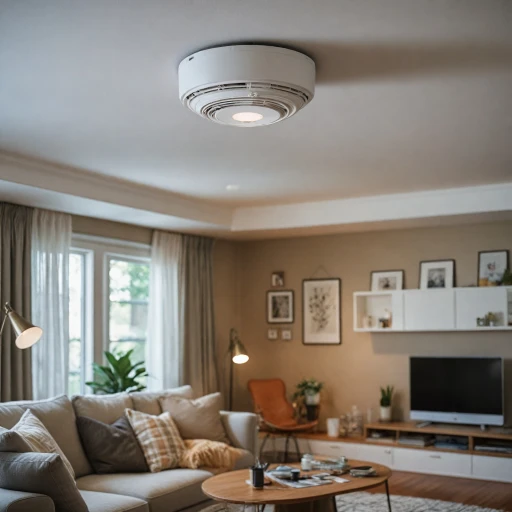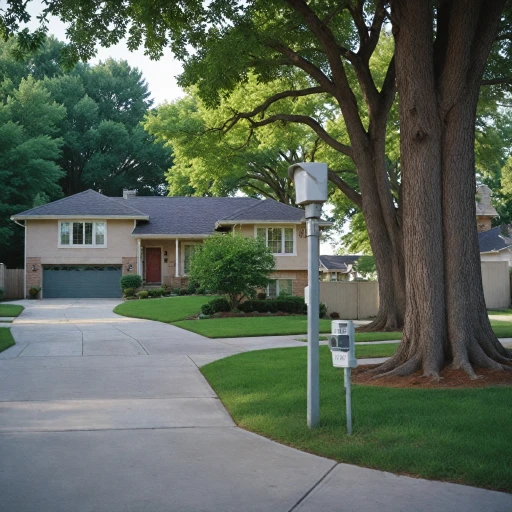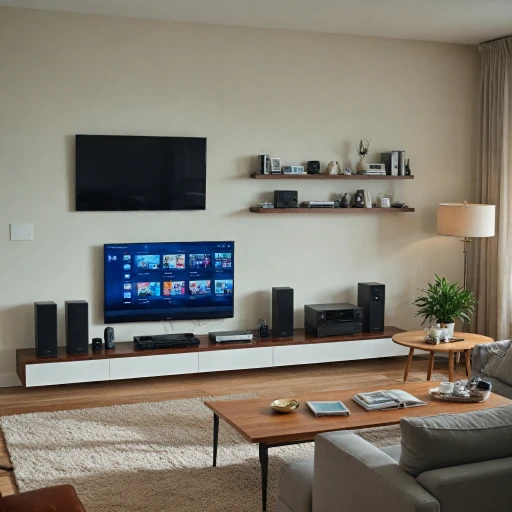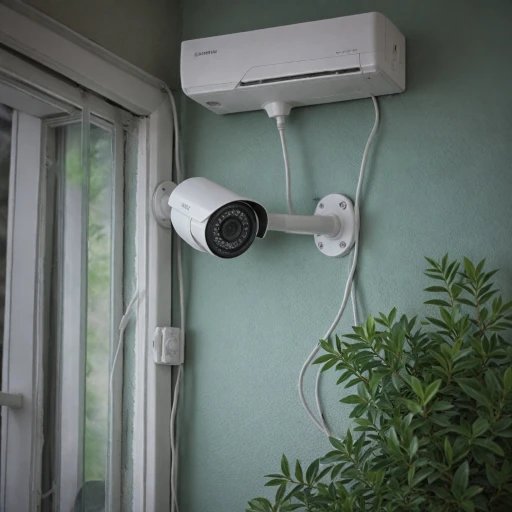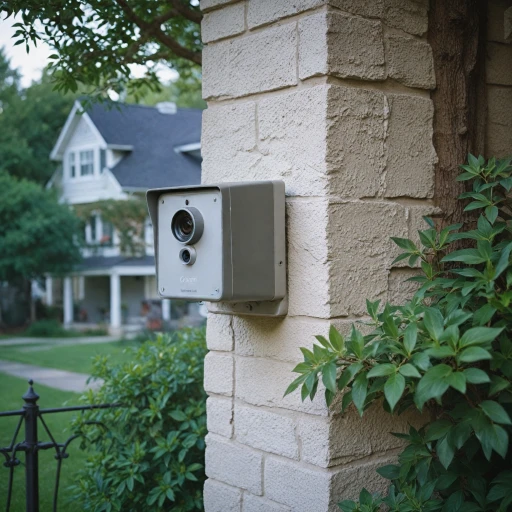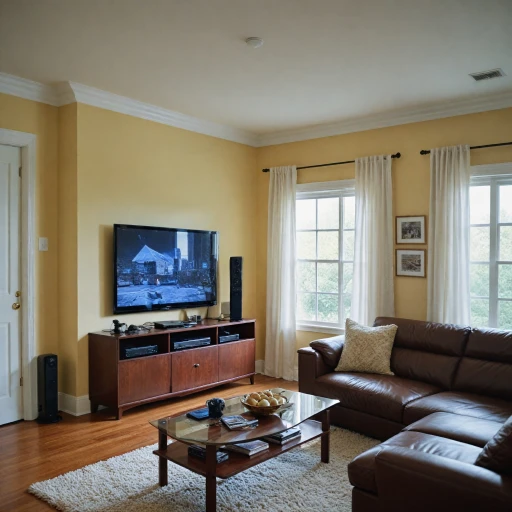What is a PoE Splitter?
Decoding PoE Splitters: The Basics
A Power over Ethernet (PoE) splitter is an integral component for those eyeing a seamless home security setup. At its core, a PoE splitter works by efficiently dividing power and data transmitted over a single Ethernet cable into separate outputs. This clever mechanism allows devices that don't natively support PoE technology to tap into the benefits of power and data delivery over the same cable. PoE technology streamlines the connectivity of various devices, eliminating the need for additional power cables. For instance, your home security cameras can receive both electricity and data through one Ethernet cable, significantly simplifying the installation process. This function becomes invaluable, especially when dealing with multiple surveillance cameras dispersed across a property.The Essentials: How PoE Splitters Work
PoE splitters are often used in tandem with PoE injectors or PoE switches. While a PoE switch connects multiple devices over Ethernet, a PoE injector injects power into an Ethernet cable. The PoE splitter then comes into play by separating this power from the Ethernet data, supplying it to devices like security cameras that may lack PoE capabilities. As with other network equipment, PoE splitters come in various specifications. Key factors include input voltage, power output levels, and compliance with standards such as IEEE 802.3af or IEEE 802.3at. Understanding these features will guide you to make the best choice tailored to your home security system’s needs. To deepen your knowledge, consider exploring resources that highlight the distinctions between PoE network switches that might not require an uplink for basic setups. Learn more about PoE network switches without uplink here.Advantages of Using a PoE Splitter in Home Security
Maximizing Utility with PoE Splitters in Home Security Systems
A Power over Ethernet (PoE) splitter can significantly enhance your home security system by providing both electrical power and data connection through a single Ethernet cable. This fusion of power and data means fewer cables, reducing clutter and simplifying installation. A key advantage of utilizing PoE splitters is their ability to operate with various devices. They draw power from a PoE switch or mid-span injector and convert it into a suitable output for non-PoE compliant devices. This ensures your security cameras receive both power and data efficiently, enhancing their operational capability. PoE splitters are often TAA compliant, making them an excellent choice for those seeking compliant solutions. With options like gigabit Ethernet and single-output ports, they cater to varying power and data demands, ensuring seamless camera function. Choosing PoE splitters with a suitable operating temperature range is crucial for maintaining system reliability, especially in industrial settings or extreme conditions. This ensures your security apparatus remains uninterrupted, granting peace of mind. For those weighing the price-to-function ratio, it's vital to explore the interplay between the different types and prices of PoE splitters. Affordability does not necessitate a compromise on functionality, as various models like IEEE PoE offer robust solutions for diverse needs. Moreover, leveraging PoE technology can bolster your security strategy by ensuring a constant power supply. This is invaluable, especially in security setups requiring uninterrupted power and data flow. Read more about how camera cables play a pivotal role in home security systems to understand the holistic view of security configurations: Understanding the Importance of Camera Cables in Home Security Systems.How to Choose the Right PoE Splitter for Your Needs
Selecting the Optimal PoE Splitter for Your Setup
Choosing the right PoE splitter is crucial for ensuring your home security system's efficiency and reliability. Understanding your device's specifications and your network's architecture will guide you towards making an informed decision. When it comes to PoE splitters, they come in various types and models, each suited for different purposes. Here's what you should consider:- Power Output Requirements: Ensure the PoE splitter you choose matches the power needs of your security devices. Assess the PoE power supply with consideration to IEEE 802.3af, 802.3at, or 802.3bt standards to confirm compliance.
- Network Specifications: Identify whether your network requires a gigabit PoE splitter for higher data throughput. If speed is critical, consider gigabit ethernet compatibility.
- Environment Suitability: Evaluate the operating temperature range of the splitter, ensuring it is appropriate for your particular environment, be it indoor or industrial settings. An industrial-rated splitter can offer additional durability.
- Ease of Installation: Look for a splitter that fits seamlessly into your setup. A mid-span PoE injector allows ease of integration without disrupting existing connections.
- Budget Considerations: Balance the pricetag with features. There's often no need to overspend if your system doesn't demand top-tier specifications.
- Port Configurations: Decide if a single port splitter will suffice or if your system requires multi-port options. The number and placement of security cameras will inform this decision.
Installation Tips for PoE Splitters in Home Security Systems
Installing PoE Splitters in Your Home Security System
Setting up PoE splitters within your home security system is a manageable task, but it requires attention to detail to ensure optimal performance.- Assess the Network Configuration: Connect your PoE splitter to a PoE switch or injector. Choose between a single port or multiple port options depending on the number of devices that require power. Ensure your existing network is capable of handling additional load from these splitters.
- Positioning the Splitter: Place the PoE splitter near the device it will power, such as a home security camera. Keep the length of the output cable minimal to reduce any potential power loss.
- Verify the Cable: Utilize a high-quality Ethernet cable compliant with Gigabit Ethernet standards to connect the PoE splitter to your device. The cable should be suitable for the distance over which it will span, providing robust Ethernet data transfer and stable power supply.
- Power and Data Separation: When connecting the splitter, ensure that it properly separates power from Ethernet data, providing a consistent power output to the device while maintaining efficient data transfer.
- Adhere to IEEE Standards: Check the specifications of the PoE splitter to confirm it is IEEE compliant. This ensures compatibility with most PoE devices, reducing potential issues.
- Consider Environmental Factors: The operating temperature of your PoE splitters may affect performance. Install them in areas where temperature and humidity are within the recommended range for your industrial accessories.
Common Challenges and Solutions with PoE Splitters
Overcoming Installation Challenges
When using PoE splitters in home security systems, some common challenges may arise. Understanding these issues and their solutions can better equip you to maintain an efficient and uninterrupted security system.
Compatibility Concerns
One common issue is compatibility between the PoE injector, splitter, and other devices. Ensuring that all components comply with IEEE standards is crucial. For seamless operation, make sure your PoE injector and splitter both support the same power (such as IEEE 802.3af/at). Additionally, verify that your splitter and injector are of the same type, either mid span or end span, to ensure corresponding power output.
Cable Management
Proper cable management is another frequent challenge. Using a single Ethernet cable to transmit both power and data simplifies installation, but cable length and quality can impact device performance. Opt for cables like CAT6 or gigabit PoE-compliant cables which support higher data speeds and power supply over longer distances—ideal for extending network reach with minimal signal loss.
Matching Power Output
Another challenge involves matching the power output of the splitter with the needs of the device. Always ensure that the power input from the splitter meets the device’s requirements. Check your device's power needs against the splitter’s output rating to avoid underpowering or overpowering, which can lead to performance issues or damage.
Dealing with Temperature Variables
Operating temperature can affect PoE efficiency, particularly in industrial settings. While PoE splitters generally operate effectively across a broad temperature range, it’s critical to choose components designed for the specific environmental conditions they will be exposed to. Look for industrial-rated devices if your setup is in a more extreme environment.
By recognizing these common challenges with PoE splitters and their solutions, you can enhance the reliability and efficiency of your home security system, ensuring continued safety and surveillance without interruption.
Enhancing Security with PoE Splitters: Real-World Applications
Real-World Applications: Maximizing Security Efficiency
With the integration of a PoE splitter in your home security system, you can effectively maximize both functionality and flexibility. By systematically delivering power and data across a single Ethernet cable, PoE offers streamlined installation and operation, resulting in considerable cost savings and efficiency boosts. The compatibility with IEEE standards ensures reliable performance across various devices.
This versatile technology significantly enhances surveillance capabilities, providing uninterrupted power supply to security cameras even in industrial environments with fluctuating operating temperatures. With various types of PoE splitters available, including the mid span injector and single port splitter, you are equipped to manage power Ethernet needs efficiently.
Additionally, PoE splitters provide the power output needed to maintain constant surveillance without the necessity of additional infrastructure. By enabling gigabit ethernet speeds, they deliver both data and power seamlessly, ensuring that your home security system remains robust and responsive to any threats.
While the initial price of setting up PoE infrastructure might be a point of consideration, the long-term advantages significantly outweigh these costs. You gain enhanced flexibility across your security setup with minimal cabling, while ensuring compliance with TAA standards for peace of mind.

